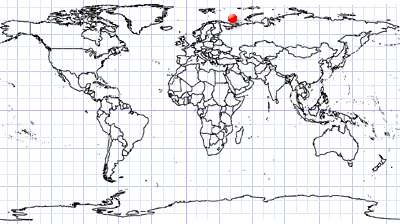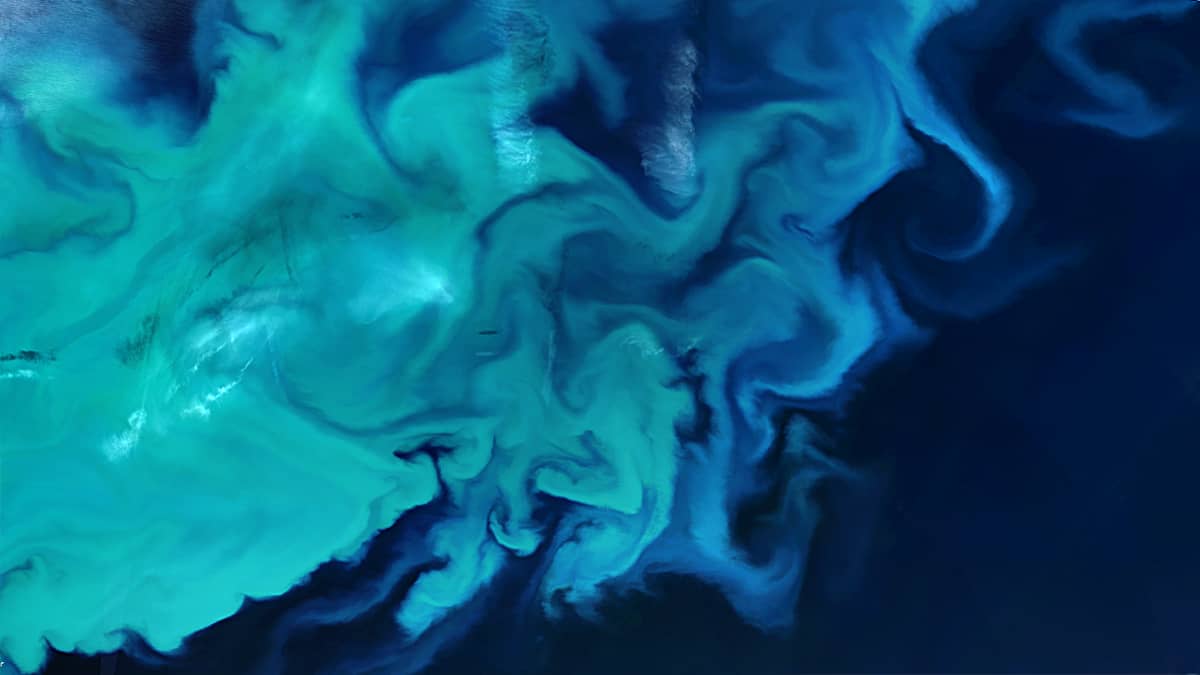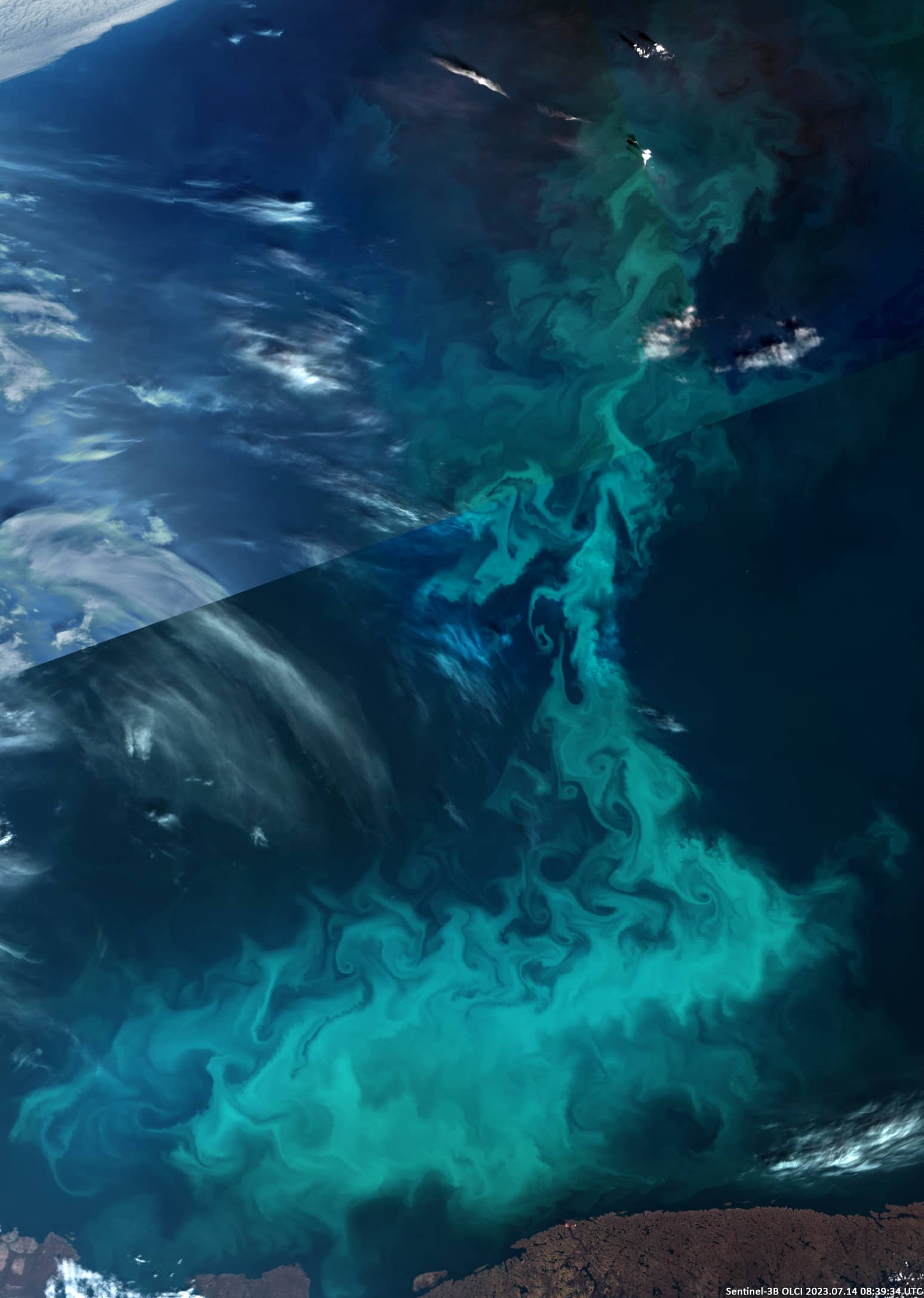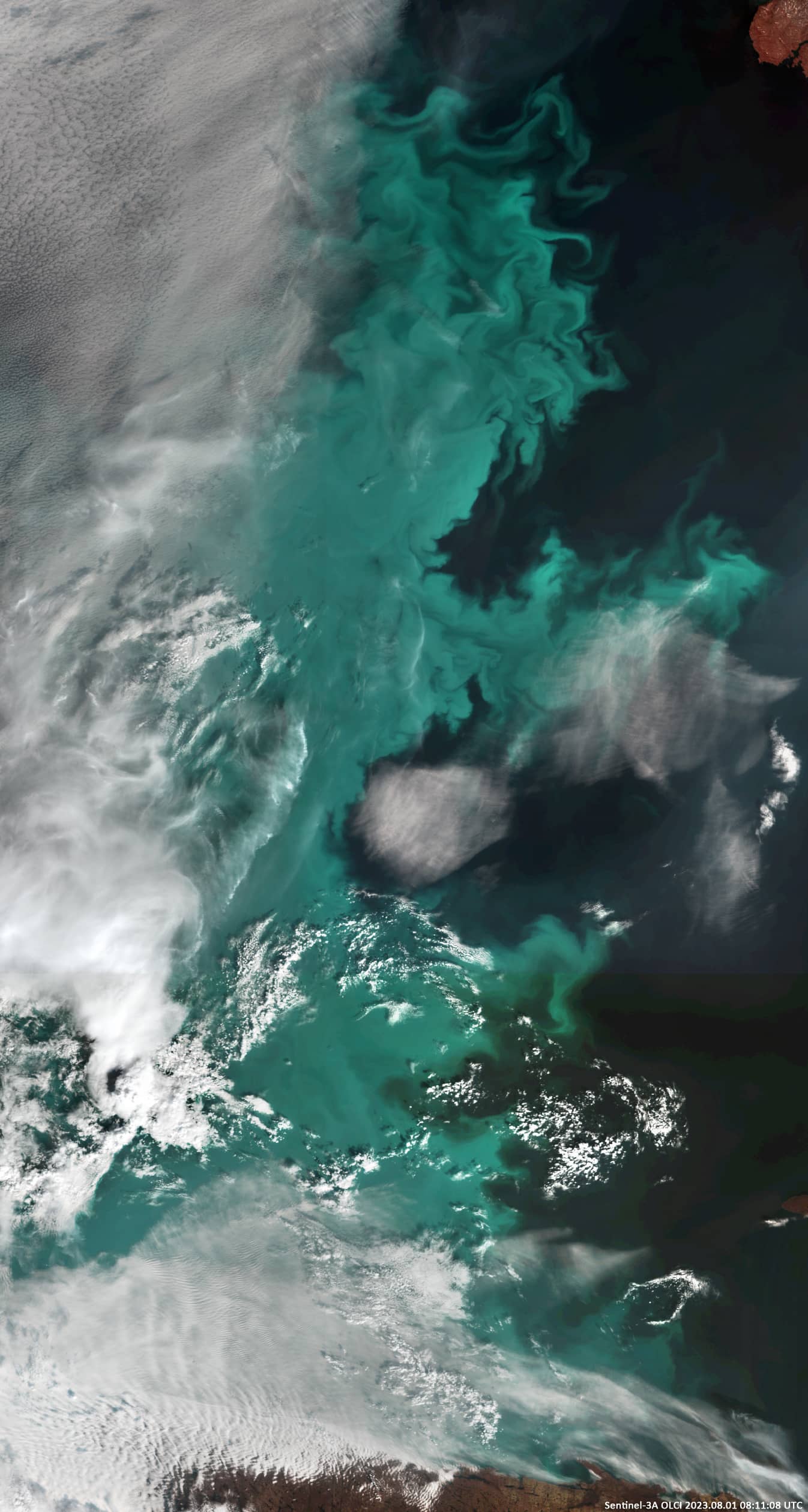
Algae bloom in Barents Sea
Barents Sea | Arctic Ocean
Dates of acquisition:
- June 14th, 2023 | 08:39:34 UTC
- August 1st, 2023 | 09:10:13 UTC
Sensors: Sentinel-3A,B OLCI; Sentinel-2 L2A
Coordinates: ca. 71°N, 41°E
Phytoplankton blooms in the Barents Sea often occur in mid to late July and August when the sun shines around the clock. This is when the water is at its warmest, stratified into warmer and cooler, fresher and saltier layers.
The milky blue and turquoise colours of the sea surface indicates that the surface water is likely to contain coccolithophores, dominated by the microscopic plankton Emiliania Huxleyi 2-10 micrometers in size, covered with white, highly reflective calcium carbonate; this species can grow in a water depth up to 50 meters .
Coccolithophores are a very numerous and widespread species of algae. They are considered to be the most productive calcifying organisms on Earth and they are crucial to the global carbon cycle of our planet.
Recently, coccolithophores appear to have invaded some subarctic seas. In the Barents Sea, their spatial extent has doubled in recent years, while mixed blooms of coccolithophores and another important bloom-forming group, diatoms, have also been observed in this region.
Coccolithophores and other phytoplankton species are the main food source for small zooplankton and fish.
Clear skies are rare in this part of the world, as the Barents Sea is cloudy for about 80% of the summer. The relative absence of clouds on July 14 (Fig.1.) and August 1 (Fig.2.) allowed the OLCI sensor onboard of Sentinel-3 satellite to make these observations in the southern and eastern parts of the Barents Sea.





